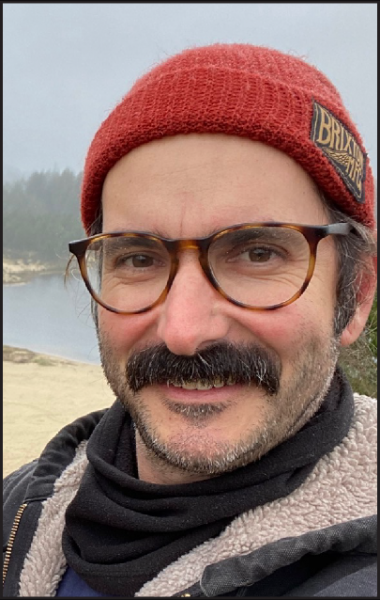Offshore Fault Damage and Slip Behavior: Insights from Microseismicity and Seismic Imaging
Travis Alongi
U.S. Geological Survey

- Date & Time
- Location
- Hybrid: In-Person & Online via Microsoft Teams
- Host
- Rob Skoumal
- Summary
Many of the world’s most damaging faults are offshore, presenting unique challenges and opportunities for studying earthquakes and faults. This talk explores how earthquake-generated (passive) and human-made (active) marine seismic methods improve our knowledge of on-fault slip behavior and off-fault damage.
The first part of my talk explores coupling along the poorly resolved shallow offshore portion of the southernmost Cascadia subduction zone plate interface using microseismicity patterns. Knowledge of coupling provides information about the spatial distribution and magnitude of elastic strain accumulated interseismically, presumably to be released in future earthquakes. We develop a high-quality seismic catalog using a dense amphibious seismic array and advanced location techniques to provide constraints on the coupling here. We reveal an absence of shallow plate interface seismicity, suggesting high coupling.
The second part of my talk focuses on the in-situ spatial distribution of secondary faults surrounding the main fault identified using marine-controlled source seismic reflection imaging. Through secondary faulting, the damage zone provides a window into the inelastic response of the Earth’s crust to strain. To better understand the damage zone, we develop a workflow to automate fault detections in seismic images, with dense sampling, over large distances (~10 km from the fault). Using this method, we find a peak in fault damage occurring at the location of the active main fault strand and a decay of damage with lateral distance. We found that rock type influences damage patterns and controls near-fault fluid flow. Additionally, accumulated fault slip determines the overall width of the damage zone, and along-strike variations in damage are controlled by fault obliquity.
Closed captions are typically available a few days after the seminar. To turn them on, press the ‘CC’ button on the video player. For older seminars that don’t have closed captions, please email us, and we will do our best to accommodate your request.
 Jump to Navigation
Jump to Navigation